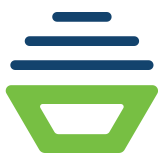There are several technology skills that are expected to be in high demand. Here are some of the best technology skills you should consider learning:
Artificial Intelligence (AI) and Machine Learning (ML)
Artificial Intelligence (AI) and Machine Learning (ML) are two closely related fields that have gained significant attention and importance in recent years. Here’s an overview of AI and ML:
Artificial Intelligence (AI):
Artificial Intelligence refers to the development of computer systems that can perform tasks that typically require human intelligence. AI aims to create intelligent machines that can reason, learn, perceive, and make decisions. It encompasses various subfields, including natural language processing, computer vision, expert systems, and robotics. AI techniques range from rule-based systems to more advanced machine learning algorithms.
Machine Learning (ML):
Machine Learning is a subset of AI that focuses on enabling computers to learn and improve from experience without being explicitly programmed. It involves developing algorithms that automatically analyze data, identify patterns, and make predictions or decisions. ML algorithms can be categorized into supervised learning, unsupervised learning, and reinforcement learning, depending on the type of training data and feedback available.
Cybersecurity
With the increasing frequency and sophistication of cyber threats, cybersecurity skills are highly sought after. Learning about network security, ethical hacking, incident response, and cloud security can help protect digital assets and ensure data privacy.
Cybersecurity is the practice of protecting computer systems, networks, and data from unauthorized access, attacks, and breaches. It involves implementing measures such as network security, encryption, access controls, and vulnerability assessments to safeguard against cyber threats. Cybersecurity aims to ensure the confidentiality, integrity, and availability of information, as well as protect against data breaches, malware, phishing, and other cyber attacks. With the increasing reliance on digital technologies, cybersecurity has become crucial in safeguarding sensitive information, preserving privacy, and maintaining the trust of individuals, businesses, and governments in the digital realm.
Data Science and Analytics
Data Science and Analytics involve the extraction of insights, patterns, and valuable information from vast amounts of data. It encompasses techniques such as data mining, statistical analysis, machine learning, and predictive modeling. Data scientists use programming languages like Python or R, along with tools and frameworks, to analyze and interpret data to make data-driven decisions and predictions. By understanding trends, identifying patterns, and uncovering meaningful correlations, data science and analytics enable businesses and organizations to optimize processes, gain a competitive advantage, and make informed strategic decisions based on data-driven insights, ultimately leading to improved performance and outcomes.
Cloud Computing and DevOps
Cloud computing is a model that allows on-demand access to a shared pool of computing resources, such as servers, storage, and applications, delivered over the internet. It provides scalability, flexibility, and cost-efficiency, enabling organizations to rapidly deploy and scale applications without upfront infrastructure investments. DevOps, on the other hand, is a software development approach that emphasizes collaboration between development and operations teams to streamline software delivery and deployment. By combining cloud computing and DevOps practices, organizations can achieve continuous integration, delivery, and deployment, ensuring faster time to market, improved software quality, and enhanced operational efficiency through automation, monitoring, and feedback loops.
Internet of Things (IoT)
The Internet of Things (IoT) refers to the network of interconnected physical devices, vehicles, appliances, and other objects embedded with sensors, software, and network connectivity, enabling them to collect and exchange data. IoT enables seamless communication and interaction between devices, creating a smart and interconnected ecosystem. It has the potential to revolutionize various domains, including healthcare, transportation, manufacturing, and agriculture, by improving efficiency, automating processes, and enabling data-driven decision-making. However, IoT also presents security and privacy challenges, as the vast amount of data collected and shared requires robust safeguards to protect against cyber threats and unauthorized access.
Full-Stack Development
Full-stack development refers to the practice of designing, developing, and maintaining both the front-end and back-end components of a web application. A full-stack developer possesses skills and expertise in multiple layers of software development, including front-end technologies like HTML, CSS, and JavaScript, as well as back-end technologies such as server-side programming languages, databases, and server management. Full-stack developers are capable of handling both client-side and server-side development, allowing them to create fully functional, interactive, and scalable web applications. Their broad knowledge and proficiency in various technologies enable them to work on different aspects of the application, ensuring seamless integration and efficient development processes.
Blockchain
Blockchain is a decentralized and distributed digital ledger technology that records transactions across multiple computers in a transparent and secure manner. It enables the creation of a tamper-proof and immutable chain of blocks, where each block contains a set of transactions. Blockchain’s decentralized nature eliminates the need for intermediaries, reducing costs and increasing trust among participants. It has gained prominence beyond cryptocurrency applications, finding use in areas such as supply chain management, healthcare, finance, and more. With its features of transparency, immutability, and decentralization, blockchain has the potential to revolutionize various industries by enhancing security, streamlining processes, and facilitating trusted peer-to-peer interactions.
Robotic Process Automation (RPA)
Robotic Process Automation (RPA) refers to the use of software robots or “bots” to automate repetitive, rule-based tasks within business processes. RPA technology allows organizations to streamline operations by automating manual and time-consuming tasks, such as data entry, data reconciliation, and report generation. These software robots mimic human interactions with applications and systems, navigating through user interfaces and performing tasks with speed and accuracy. RPA eliminates human error, improves efficiency, and frees up employees to focus on more strategic and value-added activities. It is widely adopted across industries, including finance, healthcare, customer service, and logistics, to enhance productivity and reduce costs.
Quantum Computing
Quantum computing is a revolutionary field of computer science that harnesses the principles of quantum mechanics to perform complex computations. Unlike classical computers that use bits (0s and 1s) to store and process information, quantum computers use quantum bits or qubits, which can exist in multiple states simultaneously. This property, known as superposition, allows quantum computers to perform parallel computations and solve problems at an exponential speed compared to classical computers. Quantum computing has the potential to revolutionize various industries, including cryptography, drug discovery, optimization, and machine learning, by enabling faster and more efficient solutions to complex problems that are currently intractable for classical computers.
UX/UI Design
UX/UI design, short for user experience/user interface design, focuses on creating engaging and intuitive digital experiences. UX design involves understanding user behavior, needs, and goals to design user-centered solutions. It encompasses research, information architecture, wireframing, and prototyping. UI design, on the other hand, deals with the visual and interactive elements of a product, such as color schemes, typography, and interactive elements. It aims to create aesthetically pleasing and functional interfaces. UX/UI design collaboratively ensures that products or applications are easy to use, visually appealing, and provide a seamless and satisfying user experience, enhancing user satisfaction, engagement, and overall product success.
Remember, the technology landscape is constantly evolving, and it’s important to stay updated with the latest trends and developments in your chosen field. Continuous learning, practical experience, and staying curious about emerging technologies will help you thrive in the dynamic tech industry.




